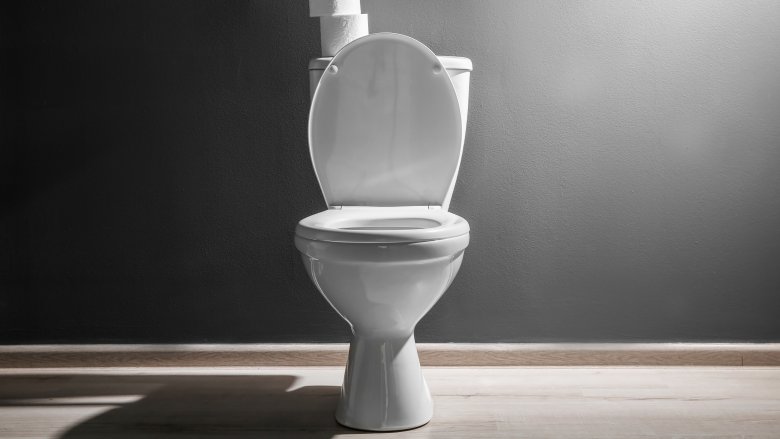Do Toilets Flush Differently Across The Globe?
Whether or not toilets flush differently in the northern and southern hemispheres has been a subject of unusually prolonged debate. This seems odd at first glance. After all, what's stopping two fluid dynamics scientists on opposite sides of the world from getting on the phone and clearing it up once and for all? Perhaps an absence of suitable laboratory-grade science toilets means they have nothing to...go on. But seriously, it seems to have taken much longer than necessary to flush away this unusually buoyant field of scientific inquiry. The reason boils down to a very real principle of physics bring obfuscated by a boringly simple feature of toilet manufacturing.
A force known as the Coriolis effect will indeed affect the path of fluids differently in the northern and southern hemispheres. As described in National Geographic, fluid is affected by our planet's rotation. Picture an orange spinning horizontally to the right. If you look at it from the top (or north, in the case of our planet) it rotates in an counter-clockwise direction. If you shift your perspective and view it from beneath (or you guessed it, south) the orange will now be rotating clockwise. Water on our planet is influenced by Earth's rotation, and just like our hypothetical orange, will be subject to counter-clockwise and clockwise forces in our northern and southern hemispheres, respectively. This, in a rotational nutshell, is why a toilet should (in the absence of all other forces) flush in opposite directions, and why it wouldn't if the world were flat.
The Coriolis effect does bear out in reality — kind of. According to an article in MIT Technology Review, in 1962 a mechanical engineering professor named Ascher Shapiro performed an experiment to show how the Coriolis effect can affect small bodies of water. Shapiro filled a large, flat-bottomed tub with water. He covered the tub to ensure the water wouldn't be influenced by airflow, and he carefully regulated the temperature of the room to rule out the influence of temperature variation. Then, he slowly drained the water away. After 15 minutes, the water began to slowly rotate. Shapiro had proven, in experimental conditions, the Coriolis effect's influence on water drainage. In perfectly controlled conditions, laboratory toilets in Sydney and Seattle would indeed drain in opposite directions — if the water drained very slowly, if the drain was positioned in the center of the water, and if the water was completely still and not affected by any other forces (like, say, five-foot Texas Rat Snakes).
That's a whole lot of ifs. It's probably stating the obvious, but real toilets fulfill none of these criteria. Toilet oddities around the world can be fascinating, but when it comes to the Coriolis effect, it's just too minute to exert a noticeable impact on your flushable friend. As Live Science points out, the direction a toilet flushes in is determined by one simple and not particularly interesting variable: the direction the toilet manufacturer decided to point the water jets. So that's another fun theory down the drain.
